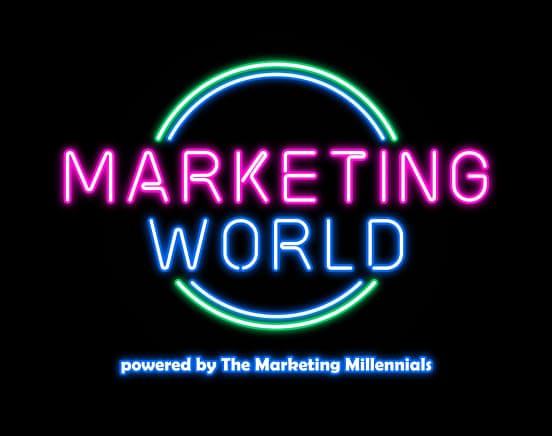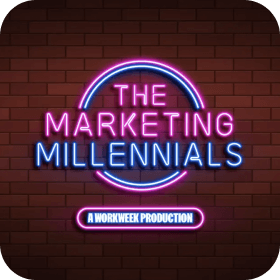There once was a podcast, The Marketing Millennials. Then came that once in a million (and followed by almost a million) LinkedIn page, The Marketing Millennials (same name LOL).
Then the newsletter (you’re reading it LOL). But then, a shift.
Please meet Marketing Island (not to be confused with Marketingland 2024). It’s not really on an Island, but it is really convenient so go with it.
On the Island you’ll find many Marketing millennials, INCLUDING both of today’s guests.
Meet Ross Simmonds and Tracey Wallace, 2 of THE BEST B2B content Marketers on the planet (and I MEAN it).
And on April 18th they’ll be breaking down their top B2B content Marketing tips so that you can make your content unsuck (yes I just made that word up).
But for today I have a little appetizer for you. Ross and Tracey came onto The Marketing Millennials Podcast and shared some of their top B2B content tips, and here’s what they had to say in their own words.
1. Great Content is:
“Great content falls into 4 simple categories: educational, engaging, entertaining, or empowering.
Create a piece of content that falls into one of these categories and that piece of content is going to resonate with the audience you’ve researched.
If you’re talking to moms, CFOs, or digital Marketers they all want content that’s going to educate them or provide insights into topics they’re trying to better understand.
That falls into the educational content.
They also want engaging content. Humans like dialogue, we want to be interacted with.
Create content that is engaging in nature, lures people in through personal stories, opinion pieces or ruffles their feathers by saying something that’s controversial.
The next type is entertaining content. We all want to laugh. We all want to feel good. If you can leverage pop culture in memes to inspire people, that too is entertainment (I proudly specialize in this LOL).
But it doesn’t always have to be laughter.
Level up your marketing game
Zero BS. Just fun, unfiltered, industry insights with the game-changers behind some of the coolest companies from around the globe.
No spam. Unsubscribe any time.
Entertainment can be anger. If you can evoke anger in people, that is great content.
The fourth type is empowering content.
Create content that celebrates, showcases, or elevates other people. If you can empower other people with your own brand and voice, you have the opportunity to tap into their network because they’re going to amplify it, giving you the chance to build a tribe.
(That’s a hack for some serious word of mouth Marketing!)
2. Build Internal Trust:
We [Klaviyo] only publish 2 pieces of content at most per week. That’s because every single piece of content we publish is really long and we’re actively repurposing.
We also are working far ahead in terms of our schedule, 6-8 weeks ahead.
That’s super important for us and our design team.
Design is hard. Where content teams do have a distribution channel, we have specific goals and tons of strategy that we can use to help lessen our workload.
Design teams don’t have that. Employees are putting requests in and they expect a perfectly designed asset in 12 hours, which is absolutely nuts.
When you get your requests in at least two weeks ahead of time it just creates better relationships between the Marketing and design teams.
It all comes back to building internal trust so that the content we put out is even more impactful.
3. Importance of Content User Fit:
User fit is understanding your audience by spending the time to learn what stories and topics motivate them.
Go into the communities where your audience is hanging out, learn about them, and give them content that will resonate with them.
If you’re going after MSPs (managed service providers), it’s a very small segment of the tech world, but there’s a subreddit that has over 200,000 MSPs subscribed to it.
If you need to create content for that group of people, you’re not just going to drink a whiskey and come up with ideas off the top of your head.
You need to go into the community they’re spending time in and sort that content by top posts. Then analyze what stories resonated with the community time and time again, and use that for insight around the type of story you need to give back to them.
(THAT is the way to create content that actually resonates.)
You can do this on Twitter, Quora, or Facebook groups. Just immerse yourself in the space your target audience hangs out in.
4. The Mindset You Need as a Creator:
If you do things that are easy, you’re going to blend in with everybody else.
It doesn’t have to be hard. You don’t have to put in the work. You can be okay with doing the exact same as everyone else in your industry and be comfortable being mediocre.
OR you can acknowledge the fact that doing hard things is what leads to the greatest breakthroughs in content (I’m a fan of THISS).
It is very, very difficult. I would be a liar if I stood up here and said, “Creating great content is easy.”
If it was easy, there would be 1 million Mr. Beasts in the world, but instead there’s only one. He has made the time and investment to create content that requires research to understand an audience, what moves people, and the psychology of content.
You should take that as a badge of honor rather than something that you look at and say, “I don’t want to do it because it’s difficult.”
Imagine you walk in for a surgery and the doctor said, “No it’s going to be too hard. We can’t fix you.” You’d be pissed. This doctor spent their entire life to build up a skillset so they can do hard things.
As Marketers, we should be encouraged and feel empowered to take on hard tasks, like creating very good content.
5. How Many Channels You Should Use:
It’s better to be excellent on one channel than mediocre across everything (SAY IT LOUDERRR).
If you’re a solopreneur, or you’re an early stage startup, find excellence on one channel and then move to the next one.
Once you’ve established content, user fit, content channel fit, and you know that you can leverage that channel to drive results, move on to the next one.
If you are a company that is already at scale and has a presence on Twitter, LinkedIn, and Facebook.
You don’t have the luxury of being able to say, let’s just focus on this one specific niche.
You have to go in with excellence applied to multiple channels. And in those situations you have to start developing content distribution and creation strategies that are isolated to those channels.
Every situation is going to be different. Every organization’s approach is going to be different, but if you’re large and already have a brand presence, start at scale trying to crack excellence across all of the channels that you invested in.”
To get the FULL B2B content Marketing playbook, register for Marketing Island now!



